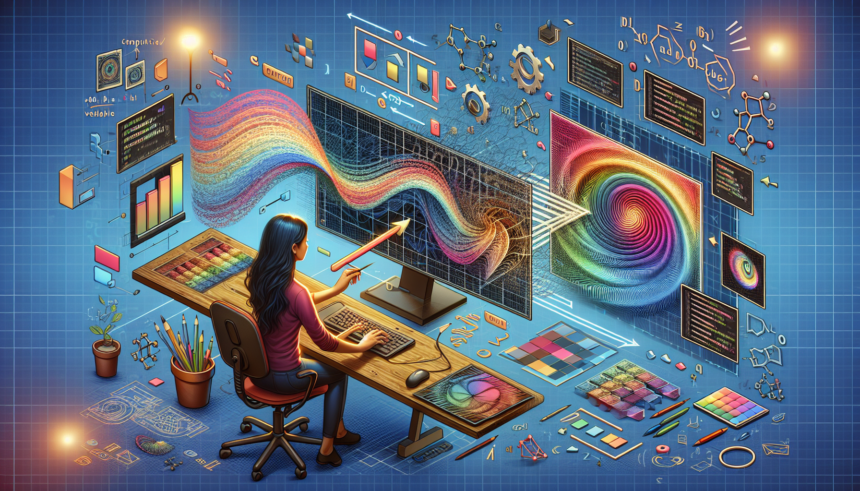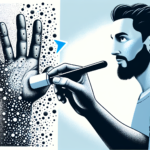In the world of computer graphics, manipulating images to achieve desired effects is a fundamental skill. One key aspect of this manipulation is image warping. Image warping allows us to transform images in creative and corrective ways, from simple resizing to more complex distortions that match specific requirements.
Image warping involves mapping pixels from one image to new locations in another image. This process can be used for a wide range of applications, from correcting lens distortions to creating artistic effects and altering object shapes within images. To understand image warping, it’s essential to grasp the foundational concepts and methods involved.
Understanding Image Warping
Image warping is fundamentally about transforming the coordinates of an image’s pixels. Instead of staying in their original positions, the pixels are repositioned according to a specific transformation function. The main goal is to map the original image (‘source’) to a new, transformed image (‘destination’). Various transformation algorithms and techniques can be used to determine how pixels are moved.
Types of Transformations
1. Affine Transformations: These are the simplest and most common transformations. They include operations such as translation (shifting), scaling, rotation, reflection, and shearing. Affine transformations preserve points, straight lines, and planes. Parallel lines remain parallel, and the ratios of distances between points are maintained.
2. Projective Transformations: Also known as homographies, these transformations can map straight lines to other straight lines but do not preserve parallelism. They are used in applications like perspective correction and image stitching. With projective transformations, the concept of vanishing points enters the equation, allowing for more complex, real-world distortions.
3. Non-linear Transformations: These transformations include more complicated techniques such as polynomial warping, TPS (Thin Plate Splines), and radial basis functions. These methods can handle distortions that are not linear or affine, allowing for more flexible and detailed modifications. Non-linear transformations are used in applications like facial recognition and morphing effects between images.
Mathematical Foundations
At the core of image warping lies mathematics. Matrix operations are fundamental to understanding how transformations are performed. The mathematics involve matrix multiplications that translate, rotate, scale, and shear the image coordinates.
Affine Transformation Matrix
[ a b tx ]
[ c d ty ]
[ 0 0 1 ]
In this matrix:
aanddcontrol scalingbandcontrol shearingtxandtycontrol translation
Using this matrix, any point (x, y) in the original image can be transformed to a new point (x’, y’) in the warped image.
Common Algorithms
Several algorithms are commonly used for image warping. Some of these include:
1. Nearest Neighbor Interpolation
This simplest form of interpolation involves taking the color value of the nearest pixel in the source image to define the value of the destination pixel. This method is fast but can result in a blocky or pixellated appearance.
2. Bilinear Interpolation
This method uses the color values of the four closest pixels to determine the color value of the destination pixel. By considering the proximity of these points and averaging their values, bilinear interpolation creates a smoother, more natural-looking result compared to nearest neighbor interpolation.
3. Bicubic Interpolation
This method goes further by considering the closest 16 pixels to determine the value of the destination pixel. It uses cubic polynomials to interpolate the color values, resulting in even smoother images with reduced artifacts. Bicubic interpolation is more computationally intensive but offers higher quality in the transformation.
4. Thin Plate Splines (TPS)
TPS is a non-linear interpolation method used for more complex warping, typically involving control points spread across the image. These control points map specific parts of the source image to destinations in a flexible, smooth manner. TPS is widely used in image morphing and medical imaging applications.
Applications of Image Warping
Image warping finds applications in various fields and industries. Some notable applications include:
1. Image Correction
Correction of lens and perspective distortions in photographs. It improves the visual quality of images and ensures that lines and objects appear straight and proportional.
2. Image Stitching
Combining multiple images to create panoramic photos. Image warping ensures that the seams between different photos align correctly, producing a seamless panoramic image.
3. Facial Recognition and Animation
Facial features are warped to align with a standard template for easier analysis and recognition.
4. Medical Imaging
For aligning medical images taken at different times or from different modalities, enhancing diagnostic accuracy.
5. Artistic and Creative Effects
Used by digital artists and graphic designers to create surreal effects and distortions for artistic purposes.
Challenges and Considerations
Image warping isn’t without its challenges. Some considerations include:
1. Computational Cost
Advanced warping techniques, especially non-linear methods, can be computationally intensive, requiring significant processing power and time.
2. Artifacts
Warping can introduce visual artifacts, such as blurring, ringing, and distortions, especially if the transformation is not carefully managed.
3. Finding the Right Transformation
Selecting the appropriate transformation technique for a given application is crucial for achieving the desired results. Different methods have their strengths and weaknesses depending on the specific requirements of the image manipulation task.
4. Maintaining Quality
Ensuring that the transformed image maintains a high level of quality and fidelity to the original image can be challenging, especially in applications requiring precise measurements.
Conclusion
Image warping is an indispensable tool in the realm of computer graphics, offering powerful capabilities for transforming and manipulating images. From simple affine transformations to more complex non-linear methods, image warping opens up a world of possibilities for correcting, enhancing, and creatively altering images. While there are challenges associated with computational costs and potential artifacts, mastering the basics and understanding the underlying principles can lead to impressive and professional results. As technology continues to advance, the techniques and applications of image warping will undoubtedly evolve, providing even greater opportunities for innovation and creativity.
FAQs
1. What is image warping?
Image warping is a process in computer graphics that involves mapping pixels from one image to new locations in another image, allowing for transformations such as resizing, rotating, and more complex distortions.
2. What are some common types of image transformations?
Common types of image transformations include affine transformations, projective (homographic) transformations, and non-linear transformations. Each has different applications and characteristics.
3. What is the difference between nearest neighbor and bilinear interpolation?
Nearest neighbor interpolation assigns the value of the closest pixel to the destination pixel, while bilinear interpolation uses the values of the four nearest pixels, averaging them to create a smoother result.
4. How is image warping used in medical imaging?
In medical imaging, image warping is used to align images taken at different times or from different modalities, assisting in accurate diagnosis and treatment planning.
5. What are some challenges associated with image warping?
Challenges of image warping include computational cost, potential visual artifacts, selecting the appropriate transformation technique, and maintaining image quality and fidelity.










